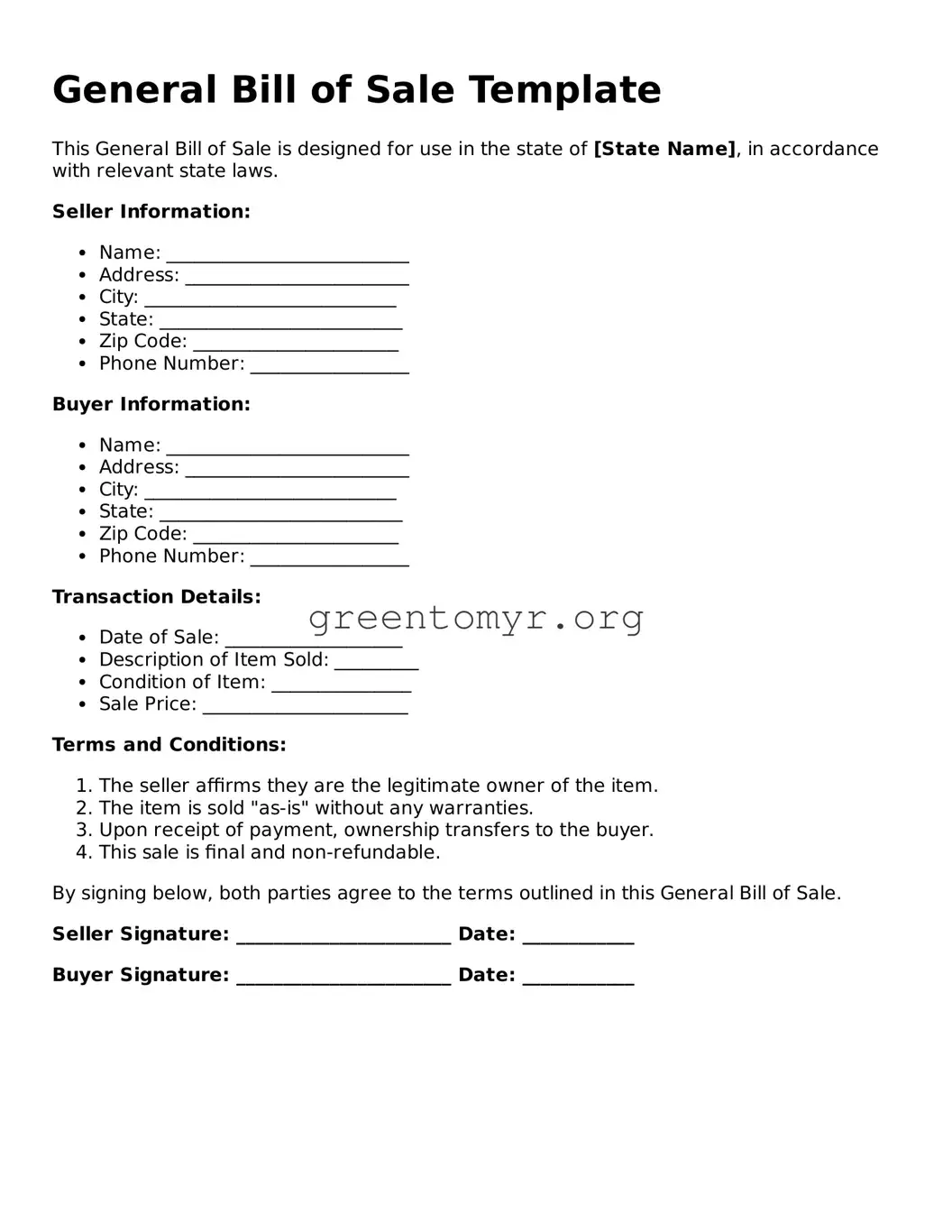Filling out a General Bill of Sale form might seem straightforward, but many people make mistakes that can lead to complications later. One common error is providing incorrect information about the buyer or seller. Whether it’s a misspelled name or an outdated address, inaccurate details can create confusion and might invalidate the sale. Always double-check this crucial information.
Another frequent mistake involves omitting essential details about the item being sold. Buyers need to understand exactly what they are purchasing. Failing to include a thorough description, such as the item's condition, model, or serial number, can lead to misunderstandings and disputes.
Many people also neglect to specify the sale price. While this may seem obvious, explicitly stating the amount helps prevent disagreements. If the price is left blank or inaccurately stated, it can cause complications should issues arise later. A clear price lays the groundwork for a fair transaction.
Additionally, individuals often forget to include the date of the sale. This date is vital for legal reasons and helps establish the timeline of ownership. Without it, complications may arise regarding liability, warranty, or other legal matters.
Signature mistakes are another common issue. Some people may overlook the need for both buyer and seller signatures. Without these signatures, the sale may not be considered legally binding. Including both parties' signatures ensures that both parties agree to the terms and conditions laid out.
People sometimes use unverified or outdated templates when filling out the General Bill of Sale form. Each state may have specific requirements, and using an outdated or irrelevant template can lead to serious pitfalls. Researching the current applicable laws and requirements can save time and stress.
Lastly, failing to keep copies of the completed Bill of Sale is an error that can lead to major headaches. Both parties should retain a signed copy to protect their interests. This documentation serves as proof of the transaction, which is essential in case of disputes or discrepancies in the future.
